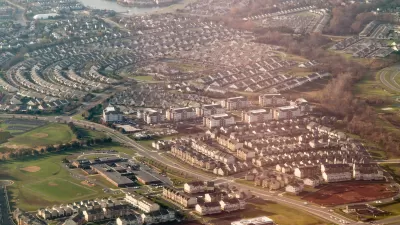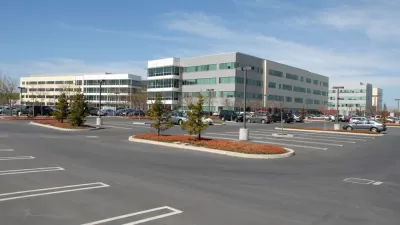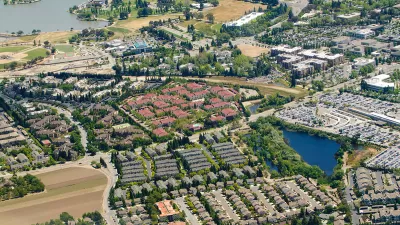Most attempts to regulate suburban development have focused on containing the growth of suburban housing. But such regulation, by restricting the supply of buildable land, risks incresing housing prices. And from a more libertarian perspective, an individual's interest in choosing to "drive to qualify" may seem quite appealing. Attempts to regulate commercial suburban development do not involve the same sentimental considerations as limits on residential development, but do risk increasing prices for commercial land, thus increasing prices for everything else.
Most attempts to regulate suburban development have focused on containing the growth of suburban housing. But such regulation, by restricting the supply of buildable land, risks incresing housing prices. And from a more libertarian perspective, an individual's interest in choosing to "drive to qualify" may seem quite appealing. Attempts to regulate commercial suburban development do not involve the same sentimental considerations as limits on residential development, but do risk increasing prices for commercial land, thus increasing prices for everything else.
But these considerations do not justify the form of suburban office parks. I can think of no reason why an office building (other than, perhaps, one where the Ebola virus is routinely handled) should be behind a 500-foot driveway with no sidewalks. The arguments for allowing offices to locate in suburbia do not justify the office park form, because 500-foot driveways do not reduce rents in any obvious respect.
Moreover, the suburban office park in its current form creates harmful externalities, by forcing people to drive to reach them even if they live nearby (thus increasing pollution and traffic congestion).
It logically follows that office buildings should be fair game for public regulation, in all but the most libertarian jurisdictions. Quite simply, any building in an area zoned for offices should be required to be within five or ten feet of a functional sidewalk, so that a pedestrian or transit user can reach the office without endangering life or limb.
In addition, any collection of office buildings should be on grid streets rather than cul-de-sacs. The traditional justification for cul-de-sacs is to protect families from cut-through traffic. But this justification does not apply to an office building, since office buildings by definition create traffic to a much greater extent than do single-family homes.

Alabama: Trump Terminates Settlements for Black Communities Harmed By Raw Sewage
Trump deemed the landmark civil rights agreement “illegal DEI and environmental justice policy.”

Planetizen Federal Action Tracker
A weekly monitor of how Trump’s orders and actions are impacting planners and planning in America.

The 120 Year Old Tiny Home Villages That Sheltered San Francisco’s Earthquake Refugees
More than a century ago, San Francisco mobilized to house thousands of residents displaced by the 1906 earthquake. Could their strategy offer a model for the present?

Housing Vouchers as a Key Piece of Houston’s Housing Strategy
The Houston Housing Authority supports 19,000 households through the housing voucher program.

Rural Population Grew Again in 2024
Americans continued to move to smaller towns and cities, resulting in a fourth straight year of growth in rural areas.

Safe Streets Grants: What to Know
This year’s round of Safe Streets for All grant criteria come with some changes.
Urban Design for Planners 1: Software Tools
This six-course series explores essential urban design concepts using open source software and equips planners with the tools they need to participate fully in the urban design process.
Planning for Universal Design
Learn the tools for implementing Universal Design in planning regulations.
Clanton & Associates, Inc.
Jessamine County Fiscal Court
Institute for Housing and Urban Development Studies (IHS)
City of Grandview
Harvard GSD Executive Education
Toledo-Lucas County Plan Commissions
Salt Lake City
NYU Wagner Graduate School of Public Service






























